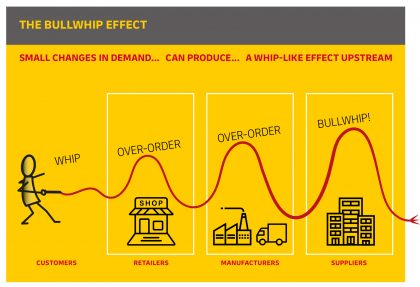According to a LoadStar report, a new white paper has highlighted how supply chains will be different in the wake of Covid-19 as the preference will be for more resilience and flexibility
What is it?
While many lessons have already been learned, businesses are starting to work out how supply chains will need to alter, said Richard Wilding, professor of Supply Chain Strategy at Cranfield University, who co-authored the paper with DHL.
As the crisis was not driven by supply chain collapse, but by lack of demand, the recovery will depend on consumer spending – but much else has changed, and a sudden increase in demand will not resolve the challenges immediately. Instead, there needs to be an “intermediate phase”, he added.
Wake Up Call for Global Supply Chains
“The Covid-19 crisis has been a huge wake-up call,” said Omera Khan, professor of supply chain management at Royal Holloway, University of London.
“Will things go back as they were before? No, too many lessons have been learned.”
What did the crisis highlight?
The paper notes that the crisis exposed weak spots, both for countries and businesses and points to Chinese-made active ingredients for pharmaceutical products revealing a dependence on other countries for cheap medical products and supplies.
“The coronavirus pandemic has demonstrated to governments – yet again – how supply chains are vulnerable to far away events in far away places,” said Stephan Freichel, professor of distribution logistics at Köln University of Applied Sciences.
Regulatory & Social Pressure Ahead
“Going forward, businesses can expect both regulatory and social pressure to ensure they are more resilient to such shocks, with stocks maintained of critical products.”
The US has already started calling for pharmaceutical supply chains to be repatriated, while Europe realised its reliance on Asia for PPE and is now working to increase manufacturing on the continent.
The white paper notes that increased resilience in the supply chain, while potentially more costly, could be worth paying for, for added protection and peace of mind.
“We are moving from an era marked by an emphasis on procurement for cost, to an era marked by an emphasis on procurement for resilience,” noted Prof Wilding.
Businesses meanwhile are re-assessing transport and warehousing networks, or looking to invest in higher inventory levels – anything to provide a long-term stable security of supply.
Changes in the ‘New Normal’
“In this ‘new normal’, cost efficiencies may now be seen as of secondary importance,” says the paper.
“Supply Chain 4.0 was already driving businesses towards this direction, investing in smaller and more widely dispersed warehouses in closer proximity to customers, rather than large centrally located facilities. The impact of the lockdown has highlighted the added benefits and flexibility of these more distributed networks, and although their inventory holding costs may be higher, the result is greater speed to market and improved resilience.”
Change takes time, however, and additional capital.
The paper points to Japan’s earthquake and tsunami in 2011 as a good example. Within hours, automotive plants were hit by parts shortages. But two lessons were learned: “first, that manufacturers needed to know more about the physical locations of its tier-2, tier-3, and tier-4 suppliers, having discovered, too late, that many of them were clustered in the north-eastern corner of Japan; and second, that single-sourcing carried risks when single-sourcing involved not just a single supplier, but a single factory”.
Panic-buying taught the industry more lessons.
“At each upstream link in the supply chain, orders were amplified, as buyers attempted to re-stock shelves.”
But while supermarkets cut back on their ranges to help manufacturers, in fact, consumption did not rise overall. The same happened in industrial supply chains
“Time and again, it has been shown that industry’s favourite strategy in times of uncertainty is to stockpile.”
The Bullwhip Effect
It is “the bullwhip effect”, explains the paper.
“Just like a bullwhip, the amplitude of demand fluctuations increases as the distance from the origin increases. A small movement with the hand produces a significantly greater movement at the tail of the whip.
“The bullwhip effect, to a greater or lesser extent, is likely to be a feature of the post-coronavirus new normal. For consumers and businesses within consumer-based supply chains, ‘just-in-case’ is likely to replace ‘just-in’time’.”
Transport will change too – and already has, it says, with expedited ocean services and greater use of rail.
“Featuring point-to-point routings, fast steaming, and ‘white glove’ dedicated expedited handling at through ports, the appeal is obvious. As the new normal slowly emerges, it is likely that more such offerings will be leveraged.”
Prof Wilding concluded: “In the new normal, if your supply chain is the same as the one that you had pre‑coronavirus, you’re probably doing something wrong.”
You can access the white paper here.
Did you subscribe to our daily newsletter?
It’s Free! Click here to Subscribe!
Source: LoadStar




















![[Watch] Divers Recovering Artifacts of 80-year-old Ship from Bottom of Somers Bay](https://mfame.guru/wp-content/uploads/2016/11/Artifacts-696x385.jpg)

